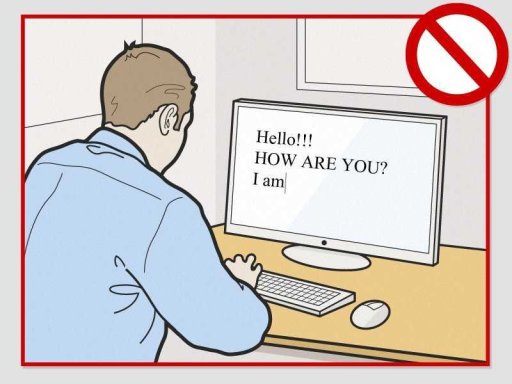 Mike Nudelman / Business Insider Do not write in ALL CAPS or use excessive exclamation points.
Mike Nudelman / Business Insider Do not write in ALL CAPS or use excessive exclamation points.
It's also one of the most misunderstood. Being too wordy, vague, or eager in the subject line is a great way to get your email deleted rather than read.
We asked career and email experts what not to do in your email subject line. Here are the most common mistakes:
1. Not writing one
Not including a subject line is one of the biggest mistakes you can make. Amanda Augustine, career expert at professional job-matching service TheLadders, stresses that the subject line can be the most important part of the email, since it often determines whether an email is opened and how the recipient responds. An email with a blank subject line will likely get deleted, lost, or immediately irritate the recipient, who is forced to open the email to figure out what it's about.
2. Writing too much
A typical desktop inbox reveals about 60 characters of an email's subject line, while a mobile phone shows just 25 to 30 characters, says Augustine. What's more, 50% of emails are now read on mobile phones, according to Dmitri Leonov, a VP at email management service SaneBox. If you write more than six to eight words and don't put the most important words at the beginning, you could lose the recipient right from the start.
3. Being too vague
The subject line should communicate exactly what the email is about so that the recipient can prioritize the email's importance without having to open it. For example, writing "Do you have a sec?" is too vague, says Augustine, since the reader will have to open the email or reply to figure out what you want. Don't make the reader guess. Keep it specific, straightforward, and use logical keywords that will make it searchable later.
4. Using filler words
Since you only have so much space to work with, don't waste it with unnecessary words like "hello," "nice to meet you," and "thanks," which can easily be included in the email's body. For instance, if you're applying for a job:
Don't write: Hello! May I ask about a job opening?
Do write: Referred by Jane Brown for Technical Writer position
5. Putting words in ALL CAPS
Using all caps may get someone's attention, but in the wrong way. It's the digital equivalent of yelling, and your job is to make the email as easy as possible for the recipient to read rather than giving them anxiety, says Leonov. Instead, use dashes or colons to separate thoughts, and avoid special characters like exclamation points.
6. Starting a sentence that finishes in the email
If you begin a thought or question that ends in the email body, then the reader is forced to open the email. It's annoying, and since clarity and being respectful of the recipient's time is the goal, it's not very helpful, says Augustine. Consider whether instant message, a call, or an in-person chat might be a better medium for your question.
7. Using the wrong name
Augustine says copy-and-paste errors are all too common. Sometimes when people are sending a similar email to multiple people, they forget to tailor it to each reader and end up with the wrong name or title in the subject line. The easiest way to avoid this is to reread the subject line before you hit send.
8. Not indicating the urgency
"People want to know whether they really need to read this now and if they have to respond," says Augustine. If you need a response, make it clear in the subject line and set a deadline. For instance, you could say: "Please reply by Friday." If not, tack on "no response needed" or "FYI" to the end.
9. Not including who referred you
If you've been referred by a mutual acquaintance, do not save that for the body of the email, says Augustine, since you risk it getting trashed before the recipient opens it. To grab the reader's attention, she suggests beginning the subject line with the full name of the person who referred you.











































